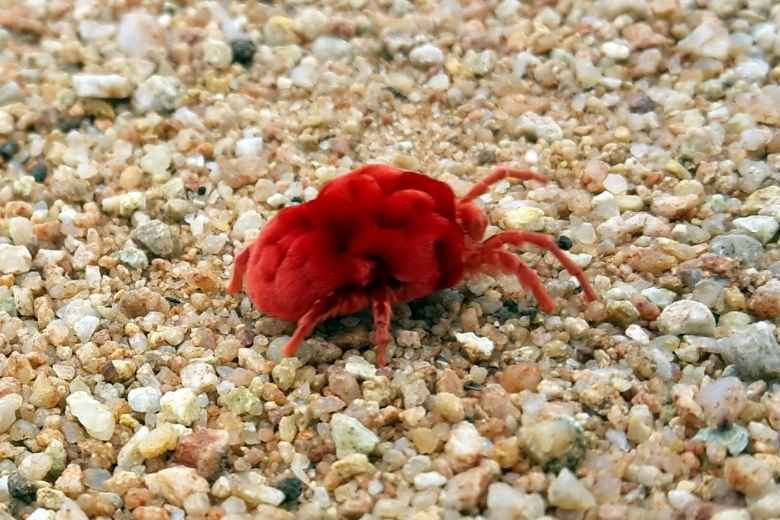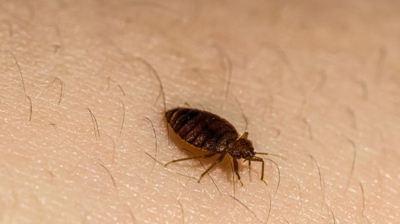
Chiggers

Are Chiggers Harmful?
Chiggers, which are the larvae of mites from the Trombiculidae family, are considered harmful primarily due to their bites, which can cause intense itching, skin irritation, and potential secondary infections. Here are some of the ways in which chiggers can be harmful:
- Severe Itching and Skin Irritation – Chigger bites inject digestive enzymes that break down skin cells, causing an intensely itchy rash. The body reacts to these enzymes, leading to red welts or bumps that can persist for days or even weeks.
- Risk of Secondary Infections – Excessive scratching of chigger bites can break the skin, making it vulnerable to bacterial infections such as impetigo or cellulitis.
- Allergic Reactions – Some individuals may experience more severe allergic reactions to chigger bites, leading to prolonged swelling, discomfort, or even hypersensitivity reactions.
- Transmission of Disease (Rare but Possible) – While chiggers in the U.S. are not known to transmit diseases to humans, in some parts of the world, such as Asia and the Pacific region, certain species can carry scrub typhus (Orientia tsutsugamushi), a serious bacterial infection that can cause fever, rash, and organ complications if untreated.
- Discomfort and Sleep Disruptions – The extreme itching and irritation from chigger bites can lead to sleep disturbances, decreased concentration, and general discomfort, affecting daily activities.
- Psychological Distress – The presence of chigger bites, especially in large numbers, can cause anxiety or stress, particularly for individuals who have a fear of insects or experience severe skin reactions.
While chiggers are not typically dangerous in most cases, their bites can cause significant discomfort and potential complications, making prevention and prompt treatment essential.
Learn more: Do Chiggers Bite? || What Do Chiggers Look Like?
Chigger Removal
Getting rid of chiggers is crucial for both health and comfort reasons, particularly because of the intense irritation and potential secondary complications they can cause. Chiggers are the larval stage of certain mites (commonly Trombiculidae), and they feed on skin cells rather than blood, contrary to common belief. When they bite, they inject digestive enzymes into the skin to break down tissue, forming small, itchy, red welts known as chigger bites. Here’s why prompt elimination is important:
- Severe Skin Irritation: Chigger bites cause intense itching that can persist for days to weeks. Scratching the bites may lead to further skin trauma, inflammation, and persistent discomfort, which can significantly affect daily activities, sleep, and quality of life.
- Risk of Infection: Scratching open chigger bites can break the skin, creating an entry point for bacteria. This can result in secondary infections such as cellulitis or impetigo, particularly in children, the elderly, or immunocompromised individuals.
- Widespread Infestation: Chiggers thrive in tall grasses, weeds, and moist vegetation. A small infestation can quickly grow if not addressed, affecting larger areas of your yard, garden, or recreational spaces. Early eradication prevents repeated bites and stops the population from expanding.
- Impact on Pets and Livestock: Chiggers can also irritate animals, causing excessive scratching, hair loss, or localized skin infections. This is particularly concerning for pets or livestock that frequent grassy or wooded areas.
- Avoiding Allergic Reactions: Some individuals have heightened sensitivity to chigger saliva, resulting in more severe allergic reactions, swelling, or blister-like formations. This can exacerbate discomfort and prolong healing time.
- Economic and Practical Considerations: For homeowners, gardeners, or anyone maintaining outdoor spaces, a chigger infestation can interfere with outdoor work, recreation, and property use. Pest control costs rise with larger, unchecked populations, making early intervention more cost-effective.
Eradicating chiggers isn’t just about stopping the itching—it prevents infections, protects family members and animals, preserves property usability, and minimizes long-term pest control challenges. Addressing both the environment (grass, weeds, leaf litter) and personal protection measures is essential to fully control them.
Learn more: How To Get Rid Of Chiggers
Chigger Control
Hiring our professional pest control for chiggers is the most reliable way to eliminate an infestation and protect your property long-term. Chiggers are tiny, hard-to-detect mites that hide in grass, weeds, and wooded areas, making them extremely difficult to control with do-it-yourself methods. While home remedies or over-the-counter sprays may provide temporary relief, they rarely address the full scope of the problem or prevent chiggers from returning.
Our licensed pest control professionals have the expertise to correctly identify chiggers, locate their breeding grounds, and apply treatments that penetrate areas where they thrive. Our professionals also use products and application methods that are far more effective and longer lasting than what is available to homeowners. Beyond treatment, we provide tailored prevention strategies—such as vegetation management and barrier applications—that significantly reduce the risk of re-infestation.
Additionally, chigger bites can cause intense itching, irritation, and even secondary infections if scratched, so quick and effective elimination is key to protecting your family, pets, and outdoor comfort. Our professional pest control ensures thorough eradication, ongoing monitoring if needed, and peace of mind knowing the infestation is handled safely and effectively.
Chigger Exterminators
Hiring our local exterminators rather than a national company is far more effective for chigger control, largely because these mites are highly dependent on local environmental conditions and often require nuanced treatment strategies. Here’s why our local professionals are the better choice:
- Deep Knowledge of Local Conditions: Chiggers thrive in specific microenvironments—moist soil, tall grasses, weeds, and leaf litter. Our local exterminators understand the seasonal patterns, typical hotspots, and regional climate factors that influence chigger populations.
- National companies generally follow standardized protocols that often do not address the unique ecological nuances of the area, reducing their effectiveness.
- Tailored Treatment Plans: Our local exterminators customize our treatments, based on your property’s specific layout, vegetation, and soil conditions. We also integrate habitat modification recommendations—like targeted vegetation trimming, soil treatment, and moisture control—which are critical for long-term chigger prevention. National companies often rely heavily on generic chemical applications, which do not always reach the areas where chiggers hide, and can result in the overuse of pesticides unnecessarily.
- Faster Response and Follow-Up: Chiggers reproduce quickly, and repeated or timely treatments are often needed. Our local exterminators can respond promptly, often the same day or within 24–48 hours. We are also easier to schedule for follow-up inspections and retreatments, which is sometimes essential for full eradication. National companies often have longer delays due to centralized call centers or scheduling protocols.
- Community-Specific Expertise: Unless your property is truly one of a kind, our local exterminators have treated numerous properties similar to yours in the same area. We know which products, concentrations, and application methods work best in the local soil, climate, and vegetation. We also understand local regulations on pesticide use, and can ensure safe and legal application.
- Personalized Customer Service: Our local team is more invested in our reputation within the community. This translates into higher accountability, more personalized attention, and thorough explanations of treatment strategies. National companies, by contrast, often treat your property as just another job in a large queue, limiting hands-on care and detailed follow-up guidance.
- Integrated Pest Management (IPM) Expertise: Effective chigger control is rarely just about spraying pesticides. Our local exterminators routinely employ IPM strategies: habitat modification, soil treatment, moisture control, and personal protective advice. National companies often focus primarily on chemical treatment, which can reduce effectiveness and increase the risk of recurrence.
Our local exterminators provide a precision approach: treatments adapted to your property, quicker follow-ups, cost efficiency, and ongoing guidance for preventing reinfestation. Chiggers are highly localized pests, and generic nationwide solutions often fall short. Our local expertise ensures the problem is addressed correctly and completely, not just temporarily masked.
Chigger Solutions
Our exterminators use Integrated Pest Management (IPM) to control chiggers because these microscopic larvae can cause intense itching and irritation to humans and pets, often infesting lawns, gardens, and wooded areas. IPM begins with a thorough inspection to identify areas of high chigger activity, such as tall grass, weeds, and leaf litter, as well as environmental factors that support their development, including moist soil and shaded areas. Management strategies focus on habitat modification, including trimming vegetation, removing brush and debris, improving drainage, and creating buffer zones to reduce contact with humans and pets. Targeted interventions, such as localized insecticide applications or biological controls, are applied only when necessary to minimize environmental impact. Ongoing monitoring allows our exterminators to track chigger populations, evaluate the effectiveness of treatments, and adjust strategies to prevent reinfestation. By integrating inspection, habitat management, selective control, and monitoring, IPM provides a long-term, environmentally responsible, and effective approach to managing chigger populations.
Where Are Chiggers Found?
Chiggers are commonly found in various outdoor environments, particularly in grassy or wooded areas. They prefer warm and humid conditions, so their prevalence is often highest during the late spring, summer, and early autumn. Here are some specific locations and habitats where you might encounter chiggers:
- Tall Grass and Weeds: Chiggers are frequently found in tall grass and overgrown vegetation. Fields, meadows, and lawns that haven't been mowed or maintained for a while can be prime chigger habitats.
- Woods and Forests: Chiggers can be found in wooded areas, especially in underbrush and areas with thick foliage. Hiking or walking through forested regions, especially in warm weather, can increase your risk of encountering them.
- Brushy Areas: Areas with low, thick shrubs and undergrowth are ideal habitats for chiggers. This includes places like brushy trails, the edges of forests, and overgrown paths.
- Gardens and Orchards: Chiggers may also be present in gardens and orchards, particularly if these areas have tall weeds or grasses.
- Moist Environments: Chiggers thrive in moist and damp conditions. Locations near lakes, ponds, rivers, and swamps can have chigger populations, especially in warm, humid weather.
- Animal Burrows: Chiggers are not exclusive to vegetation; they can also be found in animal burrows and nests. If you come into contact with these areas, you could potentially pick up chiggers.
Take precautions when spending time in these environments to minimize the risk of chigger bites. Wearing long clothing that covers your skin, applying insect repellent to exposed areas, and taking a shower and changing your clothes after outdoor activities can help reduce the likelihood of encountering and getting bitten by chiggers.
What Do Chiggers Eat?
Chiggers have different feeding preferences at different stages of their life cycle. Understanding what chiggers eat at each stage can provide insight into their ecological roles and potential interactions with humans.
- Larval Chiggers: The larval stage of chiggers is the one that can cause discomfort to humans. During this stage, chiggers feed on the skin cells of various warm-blooded animals, including mammals and birds. They pierce the host's skin and inject digestive enzymes to break down the skin cells. The liquefied skin tissue is then consumed by the chiggers through a feeding tube. This feeding process can result in red, itchy welts or bumps on the host's skin.
- Nymph and Adult Chiggers: Nymph and adult chiggers have different feeding habits. Nymphs typically feed on smaller arthropods, such as mites, insects, and other tiny invertebrates, in the soil or leaf litter. Adult chiggers may also feed on organic detritus, plant material, and small organisms in their environment. They do not typically feed on larger mammals or humans.
It's the larval stage of chiggers that feeds on the skin cells of warm-blooded animals, including humans, causing the characteristic itching and skin irritation. The nymph and adult stages primarily feed on smaller invertebrates and organic matter in their natural habitats.
Chigger Life Cycle
The life cycle of chiggers (Trombiculidae) consists of four stages: egg, larva, nymph, and adult. The most relevant and often problematic stage for humans is the larval stage when chiggers can bite and cause skin irritation. Here is their life cycle:
- Egg: The life cycle begins with adult female chiggers laying eggs in the soil, usually in protected, damp areas like leaf litter or grass. The eggs are small and oval, and they hatch into larvae after a few days to several weeks, depending on environmental conditions.
- Larva: This is the stage of chiggers that commonly interacts with humans. Larval chiggers are tiny, typically red or orange, six-legged arachnids. They are parasitic during this stage. After hatching, they are non-feeding for the first few days but eventually become active and seek out a host. When they find a suitable host, they attach to the host's skin, inject digestive enzymes, and feed on skin cells, causing the characteristic itching and irritation. Larval chiggers can stay attached to a host for several days before dropping off to develop into nymphs.
- Nymph: After feeding as larvae, chiggers drop off their host and transform into nymphs. Nymphs have eight legs, distinguishing them from the larval stage. They do not feed on humans but instead feed on small insects and arthropods. The nymphal stage is primarily focused on growth and development.
- Adult: Once the nymphal stage is complete, chiggers undergo a final molt to become adults. Adult chiggers are typically free-living and do not feed on animals. They often feed on plant material or other small organisms in the environment. They reproduce to lay eggs, completing the life cycle.
The larval stage is the one that causes itching and discomfort to humans. Preventative measures like wearing protective clothing, using insect repellent, and taking a shower after outdoor activities can help reduce the risk of chigger bites during this stage of their life cycle.

Hear From Our Happy Customers
-
"Great Communication"
Tech was on time, communication was great, and he accommodated my needs.
- Alonzo W. -
"Very Knowledgeable"
The tech that arrived was courteous, professional, and very knowledgeable. He was Great.
- Uerial I. -
"Professional & Considerate"
I’m pleased with Miche services. Jarvis came today. Professional and considerate. Thank you!
- Judy B. -
"Wonderful Service"
Wonderful service. Jarvis is great. Took care of everything I needed. Thank you!
- Henry P. -
"Exceeds Expectations"
I can’t say enough positive things about this company... The tech that came out, Jarvis went above and beyond my expectations. Thank you guys, I will continue using your services.
- Jake M. -
"Fantastic & Patient"
Jarvis was fantastic and patient. He answered my questions with an in-depth explanation and addressed all of my areas of concern. Would love for him to be my assigned tech going forward. Well done!
- Yonnette M.



